| Listing 1 - 10 of 298 | << page >> |
Sort by
|
Book
ISBN: 0429476418 1283070308 9786613070302 1849406057 9781849406055 9781855759589 1855759586 9781283070300 6613070300 9780429476419 0429901186 0367325268 0429915411 Year: 2007 Publisher: London New York Karnac
Abstract | Keywords | Export | Availability | Bookmark
 Loading...
Loading...Choose an application
- Reference Manager
- EndNote
- RefWorks (Direct export to RefWorks)
Since Freud invoked the Oedipus story to exemplify and verify his findings with patients and in analyzing his own dreams, psychoanalysis and literature have had a fruitful if often distrusting relationship. Literature and theory have increased enormously in range. Education no longer insists upon classics of Western literature as building blocks for understanding. Yet the tie between psychoanalysis and imaginative literature remains vital, and the two disciplines can interact vibrantly, as these selected essays of recent years from the International Journal of Psychoanalysis handsomely show. They explore overlaps of literary experience and psychoanalytic process, both of which activate our capacity to 'see feelingly', which is to say, provide occasion for a structured richness of knowing with a felt tie to truth. Both enhance consciousness, expand the emotions, undermine unconscious closures, and provoke thought; and it is those very qualities that inform their illustrative and explanatory usefulness to one another.
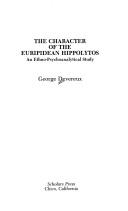
ISBN: 0891307893 Year: 1985 Publisher: Chico (Cal.) Scholars Press
Abstract | Keywords | Export | Availability | Bookmark
 Loading...
Loading...Choose an application
- Reference Manager
- EndNote
- RefWorks (Direct export to RefWorks)
Hippolytus (Greek mythology) in literature --- Sex in literature --- Tragedy --- Psychoanalysis and literature --- -Literature and psychoanalysis --- Psychoanalytic literary criticism --- Literature --- Drama --- Euripides --- -Euripides --- Euripide --- -Drama --- Literature and psychoanalysis --- Euripides.
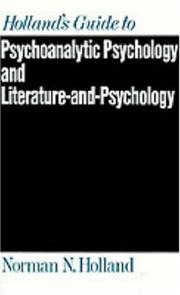
ISBN: 1280524634 0195362691 9780195362695 9781280524639 0195062809 9780195062809 0195062795 9780195062793 0195062795 Year: 1990 Publisher: New York Oxford University Press
Abstract | Keywords | Export | Availability | Bookmark
 Loading...
Loading...Choose an application
- Reference Manager
- EndNote
- RefWorks (Direct export to RefWorks)
As psychoanalysis becomes more and more important to literary studies and the accompanying literature bulks larger and larger, students often feel overwhelmed, not knowing where to turn for readings that will open up the subject. Holland's Guide to Psychoanalytic Psychology andLiterature-and-Psychology offers an ingenious solution to this problem. It provides concise outlines of all types of psychoanalytic theory and shows how they apply to literary criticism. The outlines point in turn to further, more specific readings--articles, essays, and books--which can then belocated by two extensive
Psychoanalysis --- Psychoanalysis and literature --- Literature and psychoanalysis --- Psychoanalytic literary criticism --- Literature --- Psychology --- Psychology, Pathological
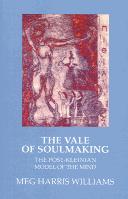
ISBN: 042990844X 0429483678 128290065X 9786612900655 1849404984 9781849404983 9781780495934 1780495935 9780429922671 0429922671 9781855753105 1855753103 9780429483677 6612900652 0367105357 Year: 2005 Publisher: London New York Karnac Books
Abstract | Keywords | Export | Availability | Bookmark
 Loading...
Loading...Choose an application
- Reference Manager
- EndNote
- RefWorks (Direct export to RefWorks)
"The post-Kleinian model of the mind, as developed by W. R. Bion and Donald Meltzer, is essentially an aesthetic one. It is founded on Melanie Klein's discovery of the "internal object" with its combined masculine and feminine qualities and ambiguous, awe-inspiring nature. Turbulent emotional experiences are repeatedly transformed through symbol-formation, on the basis of the internal relationship between the infant self and its object; and the aesthetic containment provided by this "counter-transference dream" (as Meltzer put it) enables the mind to digest its conflicts and develop.This search for a pattern that can make "contrary" emotions thinkable is modelled by all art forms and accounts for their universal significance. It is a process that can be observed particularly clearly in literature, in the form of the romance between the poet and his Muse (the traditional formulation of the psycho-analytic internal object). This book explores the "counter-transference dreams" of some of the inspired symbol-makers who have been most influential in forming the modern aesthetic perspective in psychoanalytic thinking, including Shakespeare, Milton, Keats, Homer and Sophocles. It concludes with a discussion of Bion's autobiographical works, which are the final expression of his own conception of the aesthetic model."--Provided by publisher.
Book
ISBN: 0367101394 042947881X 1782410864 9781782410867 9781780490984 9781782410867 1780490984 0429903588 0429917813 Year: 2013 Publisher: London Karnac
Abstract | Keywords | Export | Availability | Bookmark
 Loading...
Loading...Choose an application
- Reference Manager
- EndNote
- RefWorks (Direct export to RefWorks)
The world is looking East. Whilst in the West psychoanalysis is fighting to maintain its position among the other therapies in a society which has less time for introspection and self-reflective thought, in Asia a new frontier is opening up: we are witnessing a surge of interest for psychoanalysis among the mental health professionals and among the younger generations, interest which is articulated and nuanced differently in the different Asian countries. In Asia and particularly in India, Japan, South Korea, Taiwan and China, the development of psychoanalysis reflects separate socio-political historical contexts, each with a rich cultural texture and fuelled by the interest of a new generation of mental health professionals for psychoanalysis as a therapeutic method.
Psychoanalysis and literature. --- Psychoanalysis --- Psychology --- Psychology, Pathological --- Literature and psychoanalysis --- Psychoanalytic literary criticism --- Literature
Book
ISBN: 0429907265 0429482493 1782414940 9781782414940 9780429907265 9781782203261 1782203265 1781816263 9780429921490 0429921497 9780429935725 0429935722 9780429482496 0367103621 Year: 2016
Abstract | Keywords | Export | Availability | Bookmark
 Loading...
Loading...Choose an application
- Reference Manager
- EndNote
- RefWorks (Direct export to RefWorks)
Poetry --- Psychoanalysis and literature. --- Literature and psychoanalysis --- Psychoanalytic literary criticism --- Literature --- Psychological aspects.
Book
ISBN: 1316053806 1316056163 1139226509 1107027586 1107423910 9781107027589 9781107423916 9781316053805 9781316056165 9781139226509 Year: 2014 Publisher: Cambridge : Cambridge University Press,
Abstract | Keywords | Export | Availability | Bookmark
 Loading...
Loading...Choose an application
- Reference Manager
- EndNote
- RefWorks (Direct export to RefWorks)
This volume is an introduction to the relationship between psychoanalysis and literature. Jean-Michel Rabaté takes Sigmund Freud as his point of departure, studying in detail Freud's integration of literature in the training of psychoanalysts and how literature provided crucial terms for his myriad theories, such as the Oedipus complex. Rabaté subsequently surveys other theoreticians such as Wilfred Bion, Marie Bonaparte, Carl Jung, Jacques Lacan, and Slavoj Žižek. This Introduction is organized thematically, examining in detail important terms like deferred action, fantasy, hysteria, paranoia, sublimation, the uncanny, trauma, and perversion. Using examples from Miguel de Cervantes and William Shakespeare to Sophie Calle and Yann Martel, Rabaté demonstrates that the psychoanalytic approach to literature, despite its erstwhile controversy, has recently reemerged as a dynamic method of interpretation.
Book
ISBN: 9781685710217 9781685710200 Year: 2023 Publisher: Punctum Books
Abstract | Keywords | Export | Availability | Bookmark
 Loading...
Loading...Choose an application
- Reference Manager
- EndNote
- RefWorks (Direct export to RefWorks)
Chaucer's Comic Providence presents readings of five of Chaucer's Canterbury Tales that dramatize sexual division and the lack of rapport between the sexes. These readings are founded on the psychoanalytic thinking of Jacques Lacan in his rereading of Freud and are motivated by Thormann's conviction that Chaucer understood what psychoanalysis would come to study as an unconscious operating in the subject that is independent of conscious control and desire. For psychoanalysis, the subject is interminably engaged with unconscious sexual difference and with what Lacan saw as the absence of sexual rapport. Chaucer's Comic Providence analyzes Chaucer's plots of sexual adventures, mishaps, and surprise to show how the five tales dramatize the lack of symmetry and absence of accord between the sexes. Ultimately, Thormann's interest here is in the ways these five narratives represent and deal with sexual division, in their means of handling what, in any case, cannot be avoided or mastered. Consequently, the resolutions of the narratives sponsor an ethics of desire: they affirm sexual pleasure and acknowledge misprision and limitation, but they do not compromise, close down, or finish with incompatibility, contraction, and limitation. Her reading, then, claims that Chaucer's poetry already reveals the unconscious that Freud is credited with discovering. As well, Chaucer not only anticipates Lacan's pronouncement that "the unconscious is structured like a language," but also his emphasis on unconscious sexual difference and the absence of rapport between the sexes. With few exceptions, while there has been much consideration of gender in Chaucer's stories, contemporary criticism of Chaucer has remained inimical or, at the least, largely indifferent, to psychoanalysis, yet because it considers both difference and continuity, change and perpetuation, and because it incorporates psychic processes, motives, functions, and dynamics operating outside of conscious awareness, psychoanalysis offers a wider range for analysis of Chaucer's tales than does gender theory alone. Chaucer's Comic Providence also addresses the unexpected, surprising, and providentially comic resolutions of Chaucer's tales, the concomitant abeyance of sexual conflicts, and the links between emergence and abeyance, which issue in the hope of a beneficent future.
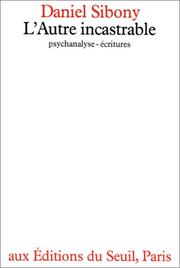
ISBN: 2020048981 9782020048989 Year: 1978 Publisher: Paris: Seuil,
Abstract | Keywords | Export | Availability | Bookmark
 Loading...
Loading...Choose an application
- Reference Manager
- EndNote
- RefWorks (Direct export to RefWorks)
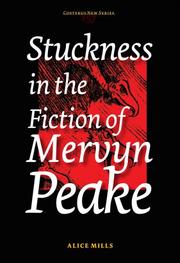
ISBN: 9042017082 9401201625 142379091X 9781423790914 9789401201629 9789042017085 Year: 2005 Volume: 157 Publisher: Amsterdam New York Rodopi
Abstract | Keywords | Export | Availability | Bookmark
 Loading...
Loading...Choose an application
- Reference Manager
- EndNote
- RefWorks (Direct export to RefWorks)
Mervyn Peake has been acclaimed as an author of fantasy and as an illustrator, but as yet has received little attention from literary critics. This book is the first to analyse all of Peake's works of fiction, including his two picture story books and novella as well as the Gormenghast series and Mr Pye. Alice Mills pinpoints the fictional quirks that render Mervyn Peake such a memorable fantasy writer, examining his literary works from Jungian, Freudian, Kristevan and post-Jungian perspectives. Stuckness in the Fiction of Mervyn Peake will be of interest to fantasy lovers and students of fantasy as a genre, as well as those exploring the psychoanalysis of literary texts.
| Listing 1 - 10 of 298 | << page >> |
Sort by
|

 Search
Search Feedback
Feedback About UniCat
About UniCat  Help
Help News
News